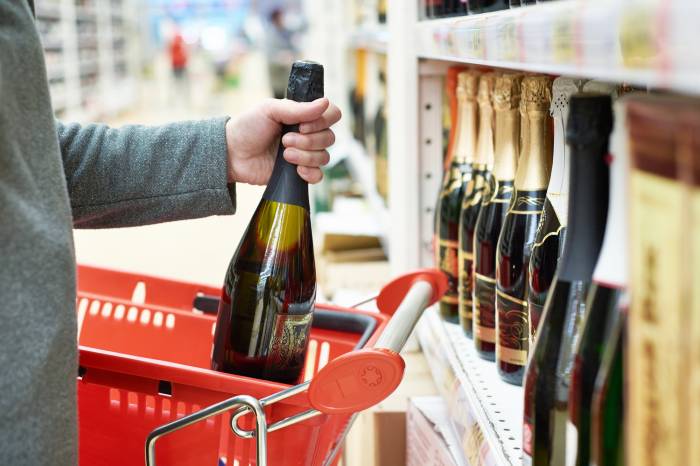Prosecco Exports Surge 129% Since 2017, Outpacing Champagne and Cava in Global Sparkling Wine Market
Italian sparkling wine dominates export growth as overall market slows, with U.S. and Belgium driving demand amid shifting consumer tastes
2025-11-20

The global sparkling wine market has seen significant changes in recent years, with Italian Prosecco emerging as the clear leader in both growth and influence. According to data analyzed by Del Rey AWM, Prosecco has outpaced its main competitors, French Champagne and Spanish Cava, in both value and volume of exports. This shift comes at a time when overall growth in sparkling wine exports has slowed, and some traditional markets are experiencing notable declines.
From 2017 to July 2025, worldwide exports of sparkling wines grew at an annual rate of 4.8% in value and 1.9% in volume. These figures are well above the average for all wine categories, which saw a 1.5% annual increase in value but a 1.5% annual decrease in volume over the same period. Sparkling wines have performed better than still bottled wines, bag-in-box formats, and bulk wines, all of which have struggled to maintain or grow their market share.
However, the pace of growth for sparkling wine exports has slowed in the past year. In the twelve months leading up to July 2025, global sales of sparkling wines fell by 0.6% in value to €8.51 billion (about $9.2 billion), while volume increased slightly by 0.4% to 1.086 billion liters. This slowdown follows three distinct phases: a sharp decline during the COVID-19 pandemic, a strong recovery through early 2023, and a period of stabilization with modest declines since mid-2023.
Price trends have also shifted. During the pandemic, average export prices for sparkling wine dropped from €7 per liter to €6.30 due to lockdowns and restaurant closures. Prices rebounded above €8 per liter during the recovery but have since stabilized below that level. As of July 2025, the average price for exported sparkling wine was €7.83 per liter—more than double the average for all wine categories—but this is down 1% from the previous year.
France, Italy, and Spain dominate the global sparkling wine market, accounting for 85% of total sales value and 75% of volume. France leads in value with €4.3 billion from 222 million liters exported, while Italy leads in volume with 519 million liters worth €2.4 billion. Spain lags behind with €520 million from 160 million liters exported.
The gap between Spain and its competitors has widened over time. In 2009, Italy and Spain exported similar volumes of sparkling wine—138 million liters each—but by 2025 Italy had increased its exports by nearly threefold while Spain’s growth was much more modest. Over sixteen years, Italian sparkling wine exports rose by 276%, compared to France’s 74% and Spain’s 22%.
Price increases have not been the main driver of Italy’s success; rather, Italian sparkling wines have managed to command higher prices than Spanish ones while still growing faster in both value and volume. In 2025, French sparkling wines averaged €19.43 per liter, Italian €4.61, and Spanish €3.24.
Within each country’s sparkling wine sector, one denomination dominates: Champagne accounts for nearly 90% of French export value; Prosecco makes up about 77% of Italian; Cava represents about 74% of Spanish export value. The price differences are stark: Champagne averages €33.84 per liter; Prosecco €4.34; Cava €3.69.
Since specific tracking began in 2017, Prosecco’s export value has more than doubled (up 129%), adding over €1 billion in sales to reach €1.84 billion by July 2025. Its export volume also doubled (up 107%) to reach 424 million liters—far outpacing Champagne (up just over 1%) and Cava (down -13%).
The United States and Belgium have become key markets for sparkling wine exports, helping offset declines in other major destinations such as the United Kingdom, Germany, and Russia. Over the past eight years, U.S. imports of sparkling wine grew by more than 60% in value; similar growth occurred in the UK and Netherlands.
Germany’s market is showing signs of contraction: total imports fell by nearly -9% in volume over the past year, with imports from Spain dropping sharply by -42%. This decline is especially pronounced for Cava, which lost almost eleven million liters in German sales over twelve months.
Despite being sold in more than 150 countries worldwide, most sparkling wine exports are concentrated among a few key markets—especially for Italy, where nearly half of all sales go to just three countries: the U.S., UK, and France.
The reasons behind Prosecco’s success do not appear to be lower prices or broader market diversification compared to its rivals; instead, analysts point to factors such as consumer preference for its taste profile (including its popularity as a base for cocktails like the spritz), strong brand image, and effective distribution networks.
As global demand for sparkling wines continues to evolve—with shifting consumer preferences and economic pressures—Italy’s Prosecco stands out as a case study in how understanding market trends can drive sustained growth even as traditional leaders face new challenges.
Founded in 2007, Vinetur® is a registered trademark of VGSC S.L. with a long history in the wine industry.
VGSC, S.L. with VAT number B70255591 is a spanish company legally registered in the Commercial Register of the city of Santiago de Compostela, with registration number: Bulletin 181, Reference 356049 in Volume 13, Page 107, Section 6, Sheet 45028, Entry 2.
Email: [email protected]
Headquarters and offices located in Vilagarcia de Arousa, Spain.